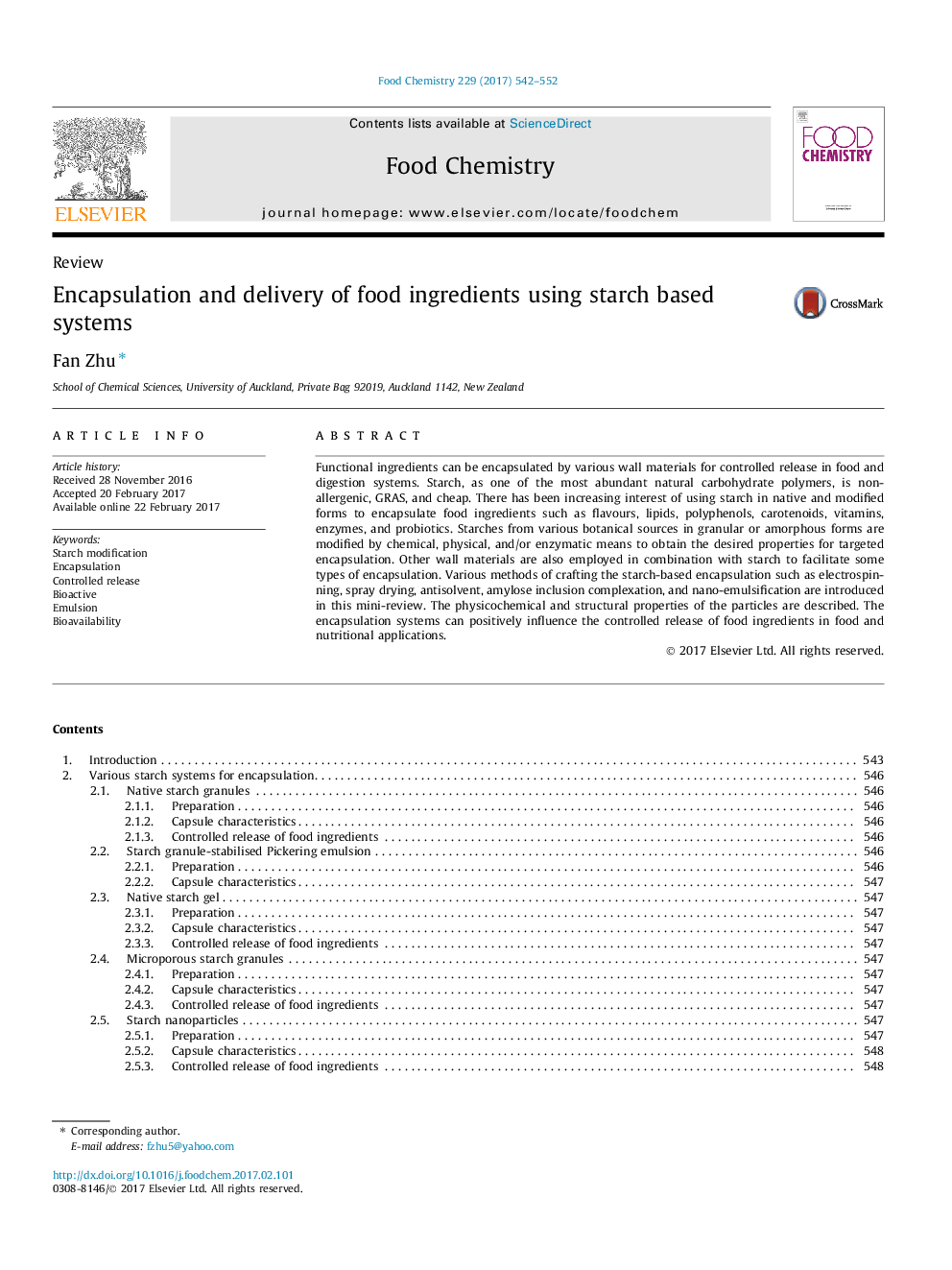| Article ID | Journal | Published Year | Pages | File Type |
|---|---|---|---|---|
| 5133603 | Food Chemistry | 2017 | 11 Pages |
â¢Starches in native and various modified forms used for encapsulation.â¢Diverse types of food ingredients encapsulated in starch based systems.â¢Preparation, characteristics and controlled release of different systems reviewed.
Functional ingredients can be encapsulated by various wall materials for controlled release in food and digestion systems. Starch, as one of the most abundant natural carbohydrate polymers, is non-allergenic, GRAS, and cheap. There has been increasing interest of using starch in native and modified forms to encapsulate food ingredients such as flavours, lipids, polyphenols, carotenoids, vitamins, enzymes, and probiotics. Starches from various botanical sources in granular or amorphous forms are modified by chemical, physical, and/or enzymatic means to obtain the desired properties for targeted encapsulation. Other wall materials are also employed in combination with starch to facilitate some types of encapsulation. Various methods of crafting the starch-based encapsulation such as electrospinning, spray drying, antisolvent, amylose inclusion complexation, and nano-emulsification are introduced in this mini-review. The physicochemical and structural properties of the particles are described. The encapsulation systems can positively influence the controlled release of food ingredients in food and nutritional applications.
